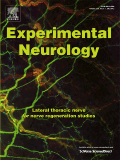
Translational Neurodegeneration
Scope & Guideline
Transforming Research into Real-World Solutions
Introduction
Aims and Scopes
- Mechanistic Insights into Neurodegeneration:
The journal emphasizes research that elucidates the biological and molecular mechanisms involved in neurodegenerative diseases such as Alzheimer's, Parkinson's, and amyotrophic lateral sclerosis (ALS). This includes studies on protein misfolding, neuroinflammation, and cellular pathways. - Biomarker Development and Validation:
A core area of focus is the identification and validation of biomarkers for early diagnosis and monitoring of neurodegenerative diseases. This includes both central nervous system (CNS) markers and peripheral biomarkers. - Therapeutic Innovations:
The journal highlights novel therapeutic strategies, including pharmacological interventions, gene therapy, and lifestyle modifications aimed at mitigating the progression of neurodegenerative diseases. - Translational Research:
Translational Neurodegeneration prioritizes studies that bridge the gap between laboratory findings and clinical applications, ensuring that basic research informs clinical practices and vice versa. - Impact of Environmental and Lifestyle Factors:
Research exploring how environmental influences, such as diet, exercise, and microbial factors, contribute to neurodegenerative disease pathogenesis is a significant aspect of the journal's aims.
Trending and Emerging
- Microbiome and Neurodegeneration:
Recent publications have shown a significant increase in research examining the relationship between gut microbiota and neurodegenerative diseases, highlighting the potential for gut-brain axis interventions. - Extracellular Vesicles and Biomarkers:
There is a growing interest in utilizing extracellular vesicles as non-invasive biomarkers for diagnosing and monitoring neurodegenerative diseases, reflecting a trend towards more accessible diagnostic tools. - Targeting Neuroinflammation:
Research focusing on neuroinflammation and its role in neurodegeneration is on the rise, with studies investigating various therapeutic targets within inflammatory pathways. - Personalized Medicine Approaches:
Emerging themes include the development of personalized medicine strategies, utilizing genetic and molecular profiling to tailor therapies for individual patients, particularly in diseases like ALS and Alzheimer's. - Innovative Delivery Mechanisms:
There is an increasing focus on novel delivery systems for therapeutics, such as nanotechnology and gene therapy, aimed at enhancing treatment efficacy and targeting specific neurodegenerative processes.
Declining or Waning
- Traditional Pharmacological Approaches:
There has been a noticeable decrease in studies focusing solely on traditional pharmacological treatments for neurodegenerative diseases without integrating novel therapeutic approaches or innovative delivery systems. - Basic Animal Models:
Research utilizing basic animal models without advanced genetic manipulations or disease modeling techniques appears to be waning. The trend is shifting towards more sophisticated models that closely mimic human disease pathology. - Single Disease Focus:
The journal is moving away from studies that exclusively focus on a single neurodegenerative disease. There is a growing trend toward research that explores overlaps and interactions among various neurodegenerative conditions.
Similar Journals

CANADIAN JOURNAL OF NEUROLOGICAL SCIENCES
Fostering Excellence in Neurological SciencesCanadian Journal of Neurological Sciences, published by Cambridge University Press, stands as a reputable source of knowledge in the field of neurology, dedicated to advancing research and clinical practice. With an ISSN of 0317-1671 and an E-ISSN of 2057-0155, this journal has been a cornerstone for the exchange of ideas since its inception in 1974 and will continue to cater to the academic community until 2024. Recognized in the top quartile (Q2) in various categories including Medicine (miscellaneous) and Neurology (clinical), its articles engage a broad audience, ranging from established researchers to students seeking to deepen their understanding of neurological sciences. Although the journal is not an open-access publication, it provides vital insights and research findings that contribute significantly to its fields. With a Scopus rank of #183 in clinical neurology and a percentile ranking that reflects its commendable standing, the Canadian Journal of Neurological Sciences is indispensable for those committed to the exploration and treatment of neurological disorders.

NATURE NEUROSCIENCE
Advancing the Frontiers of Neuroscience ResearchNATURE NEUROSCIENCE is a premier journal published by NATURE PORTFOLIO, focusing on cutting-edge research in the field of neuroscience. With an esteemed impact factor that reflects its significance in the academic community, this journal occupies an exceptional place in the 2023 Q1 category for neuroscience (miscellaneous) and boasts a leading Scopus rank of #1 out of 113 in general neuroscience, placing it within the top 1st percentile. Since its inception in 1998, NATURE NEUROSCIENCE has consistently delivered high-quality, peer-reviewed articles that contribute to our understanding of the nervous system, driving innovation and scholarship across disciplines. Although it does not offer open access, the journal remains a vital resource for researchers, professionals, and students seeking to stay at the forefront of neuroscientific discovery and discussion. Its editorial commitment to excellence ensures that it continually shapes the trajectory of neuroscience research well into 2024 and beyond, making it an indispensable asset for anyone passionate about the brain and its complexities.

Frontiers in Neurology
Exploring Breakthroughs in Neurological ResearchFrontiers in Neurology is a premier open-access journal dedicated to the advancement of research in the field of neurology, published by FRONTIERS MEDIA SA since 2010. With the ISSN 1664-2295 and an international reach established from its base in Lausanne, Switzerland, this journal has rapidly become a vital resource for neurologists and neuroscientists alike, presenting high-quality research that addresses critical developments in clinical and experimental neurology. Holding a solid Q2 quartile ranking in both neurology and clinical neurology, Frontiers in Neurology demonstrates substantial influence, evidenced by its respectable Scopus rankings—151st in clinical neurology and 77th in neuroscience neurology. The journal employs robust peer review practices to ensure rigor and integrity, while its open-access model fosters widespread dissemination of knowledge. By facilitating interdisciplinary dialogue and empowering research efforts, this journal not only supports the academic community but also contributes to the advancement of treatment and understanding of neurological disorders.

Molecular Brain
Empowering Researchers to Decode the Brain's Molecular SecretsMolecular Brain is a prestigious open-access journal published by BMC, dedicated to advancing the field of neuroscience with a particular focus on cellular and molecular mechanisms. Since its inception in 2008, the journal has been committed to disseminating high-quality research that explores the intricate workings of the brain, particularly in areas related to cellular and molecular neuroscience. Located in the heart of London, England, Molecular Brain has garnered significant recognition in the academic community, boasting a 2023 categorization in the Q2 quartile for both Cellular and Molecular Neuroscience and Molecular Biology, reflecting its growing influence and relevance in these fields. With its Scopus ranks placing it in the top 32% and 38% of its respective categories, the journal serves as an essential platform for researchers, professionals, and students alike, encouraging collaboration and knowledge-sharing through its accessible online format.

MOLECULAR NEUROBIOLOGY
Unraveling the Mysteries of Nervous System FunctionWelcome to Molecular Neurobiology, the premier journal dedicated to the exploration of the molecular mechanisms underlying nervous system function and pathophysiology. Published by Springer, this journal provides an essential platform for disseminating high-quality research in the rapidly evolving fields of Cellular and Molecular Neuroscience and Neurology, boasting an impressive impact factor that reflects its esteemed position within the academic community. With its ranking in the Q1 and Q2 quartiles for various neuroscience categories, Molecular Neurobiology stands at the forefront of groundbreaking discoveries, showcasing innovative studies that bridge basic science and clinical application. Researchers and professionals are invited to contribute to its rich portfolio, which spans from fundamental insights into cellular processes to advanced therapeutic strategies. Although Molecular Neurobiology does not operate as an Open Access journal, its influential body of work remains accessible through institutional and personal subscriptions. As we converge from 1987 to 2024, we continue to aim for excellence, seeking to catalyze progress in understanding neurological diseases and enhance the scientific dialogue within the neuroscience community.

AIMS Neuroscience
Empowering minds with cutting-edge neuroscience insights.AIMS Neuroscience is an esteemed open-access journal published by the American Institute of Mathematical Sciences (AIMS), dedicated to advancing the field of neuroscience since its inception in 2014. With a robust ISSN of 2373-8006 and an E-ISSN of 2373-7972, this journal aims to provide a platform for innovative research and scholarly discourse that spans the diverse and dynamic landscape of the neuroscience discipline. As of 2023, it holds a respectable Q3 category ranking in the miscellaneous neuroscience field and ranks #65 out of 113 in general neuroscience according to Scopus, positioning it in the 42nd percentile for impact. AIMS Neuroscience encompasses a broad scope of topics, from neurobiology and cognitive neuroscience to computational models and neuroengineering, making it a vital resource for researchers, professionals, and students alike. The journal's commitment to open access ensures that cutting-edge research is freely available, fostering collaboration and knowledge sharing within the global neuroscience community.

Alzheimers Research & Therapy
Advancing knowledge in Alzheimer's research and therapy.Alzheimer's Research & Therapy is a leading peer-reviewed journal published by BMC, dedicated to advancing our understanding of Alzheimer's disease and other neurodegenerative disorders. As an Open Access journal since 2009, it ensures that vital research findings are freely accessible to the global community, facilitating collaboration and innovation in the field. The journal's commitment to quality is evident in its impressive impact factor and its prestigious ranking in the Q1 quartile across multiple categories including Cognitive Neuroscience and Neurology. With a Scopus rank placing it in the top tier of both Neuroscience and Neurology disciplines, Alzheimer's Research & Therapy serves as a crucial platform for researchers, clinicians, and students who seek to contribute to the fight against Alzheimer's and related disorders. The journal covers a wide range of topics and actively encourages submissions that explore therapeutic strategies and innovative research methodologies, enriching the scientific dialogue in this vital area of health.

ANNALS OF NEUROLOGY
Pioneering Research in Neurology and Clinical PracticesANNALS OF NEUROLOGY, published by Wiley, stands as a leading journal in the field of neurology, renowned for its rigorous peer-reviewed articles that contribute significantly to the understanding of neurological disorders and advances in clinical practices. With an impressive impact factor and ranked Q1 in both neurology and clinical neurology categories, this journal positions itself among the top repositories of cutting-edge research, indexed in Scopus with exemplary ranks in the 98th and 97th percentiles respectively. Since its inception in 1977 and with a commitment to excellence extending to 2024 and beyond, ANNALS OF NEUROLOGY aims to disseminate groundbreaking studies and foster dialogue within the academic community, making it an essential resource for researchers, healthcare professionals, and students dedicated to neurology. Although it does not currently offer open access, its accessibility through institutional subscriptions facilitates widespread scholarly engagement.

Frontiers in Molecular Neuroscience
Exploring the molecular basis of the brain's mysteries.Frontiers in Molecular Neuroscience, published by FRONTIERS MEDIA SA, is an esteemed open-access journal dedicated to advancing our understanding of the molecular mechanisms underlying neurological functions and disorders. Since its inception in 2008, the journal has established itself as a reputable source of cutting-edge research, earning a respectable Q2 ranking in both the fields of Cellular and Molecular Neuroscience and Molecular Biology as of 2023. With an ongoing commitment to fostering innovation, the journal presents a platform for researchers, professionals, and students to disseminate their findings and engage in scholarly discourse. The E-ISSN 1662-5099 ensures that research is readily accessible, facilitating the exchange of knowledge crucial to tackling the complexities of neurological conditions. Situated in Switzerland, the journal’s global reach is augmented by its open-access model, allowing for wide dissemination of critical research findings to a diverse audience. Join the vibrant community of scientists and practitioners who are shaping the future of molecular neuroscience through their contributions to this dynamic journal.

EXPERIMENTAL NEUROLOGY
Exploring Innovative Pathways in Developmental Neuroscience.EXPERIMENTAL NEUROLOGY is a premier academic journal published by Academic Press Inc, Elsevier Science, focusing on advancements in the fields of Developmental Neuroscience and Neurology. With an impressive Impact Factor and ranked in the Q1 quartile of both categories—positioning it among the top-tier journals—this publication has established itself as a vital resource for researchers, clinicians, and students alike. Since its inception in 1959, it has fostered the dissemination of cutting-edge research and innovative approaches to understanding neurological function and related disorders. While EXPERIMENTAL NEUROLOGY currently operates under a subscription access model, its rich archives and ongoing contributions to the field continue to inspire and inform the next generation of neurobiologists. The journal also boasts a high ranking in Scopus, placing fourth in Developmental Neuroscience and twentieth in Neurology, indicating its robust influence and scholarly significance. For those committed to advancing knowledge in these critical areas, EXPERIMENTAL NEUROLOGY is an indispensable platform for inquiry and discovery.